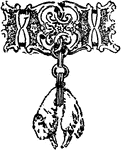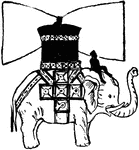
Capsicum
"A genus of annual, subshrubby plants, order Solanaceae, with a wheel-shaped corolla, projecting and…
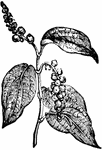
Black Pepper
"A genus of order Piperaceae. The Piper nigrum, which furnishes the black pepper of commerse, is a native…

Ipecacuanha Plant
"The root used in medicine under this name is obtained from Cephaelis Ipecacuanha, A. Rich, a small…

Jasmine
"Botanically Jasminum, a genus of shrubs or climbers constituting the principal part of the natural…

Center of Gravity
"Why does a person carrying a weight upon his back stoop forward? In order to bring the center of gravity…

Center of Gravity
"Why does a person carrying a weight upon his back stoop forward? In order to bring the center of gravity…
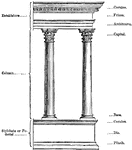
Elements of an Architectural Order
A diagram showing the titles for different types of architecture.
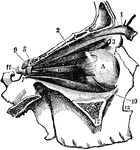
Eye Muscles
"The external bones of the temple are supposed to be removed in order to render visible the muscular…
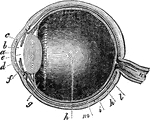
Eye
"Next in order is the aqueous humor, b, e, in the middle of which is the iris, d, c. Behind the pupil…
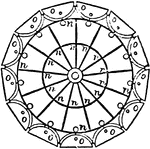
Revolving Light
"In order to produce, on the catoptric system, a fixed light showing all round the circle, a number…

Parabolic Profile
"In order strictly to equalize a fixed light over the whole horizon, which could not possibly be done…

Reflecting Prism
"Fresnel next conceived the admirable improvement of employing the principle of "total" or internal…
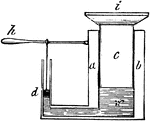
Hydraulic Press
"The pump barrel, a, b, is represented as divided lengthwise, in order to show the inside. The piston,…
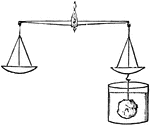
Water Weighing
"Take a piece of ivory, or any other substance that will sink in water, and weigh it accurately in the…

Camera Obscura
"Camera obscura strictly signifies a darkened chamber, because the room must be darkened, in order to…
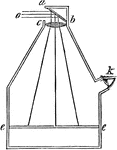
Camera Obscura
"Camera obscura strictly signifies a darkened chamber, because the room must be darkened, in order to…

Magic Lantern
"Let a candle c, be placed on the inside of a box or tube, so that its light may pass through the plano-convex…

Air-Pump
"This was invented in 1865 by H. Sprengel. The instrument, in its original (simplest) form, consists…
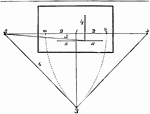
Angular Perspective
This figure comprises the whole of the points and lines preparatory to beginning a drawing in "angular…

Angular Perspective
This cube has four additional cubes of equal dimensions. This is effected by first drawing the cube…
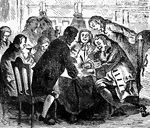
Sloughter Signing the Death-Warrant
Colonel Sloughter signing the order to execute two rebels. According to popular lore, Sloughter was…

Agricultural and Mechanical College of Texas
The basis for funding for the college was established by the Morrill Act, passed by the US Congress…

Coca
The coca plant is the source of the coca leaf used in medicine and in the production of cocaine
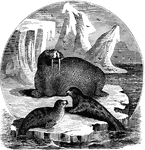
Seals and Walrus
Fur Seals make up one of the two distinct groups of mammals called "seals". Both the fur seals and the…

Offering of Isaac
"And they came to the place which God had told him of. And Abraham built the altar there, and laid the…
Three-ranked
Three-ranked arrangement, shown in a piece of the stalk of a Sedge, with the leaves cut off above their…

Opposite-Leaved
Diagram of opposite-leaved plant with a cyne of three flowers; a the first flower, of the main…
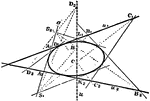
Second Order Curve
Five points are given, of which not three are in a line, a curve of second order may be drawn through…

Second Order Curve Tangents
Any four-point on a curve of the second order and the four-side formed by the tangents at these points…

Prunella
"The prunella, or self-heal, is a genus of hardy perennial, herbaceous plants belonging to the order…

Star of Bethlehem
"Star of Bethlehem, or Ornithogalum, a genus of bulbous plants belonging to the order Liliacae."—Finley,…

Greater stitchwort
"A former genus of herbaceous plants belonging to the order Caryophylacae, and now included in the genus…
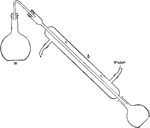
Distilling Apparatus
In order to rid water of impurities, it is required to boil water, then condense the steam to make it…

Tetragonal Bipyramids of the First Order
Represents the relation between the tetragonal bipyramid of the first order when the indices are {111}.
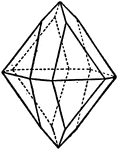
Tetragonal Bipyramids of the Second Order
Represents the relation between the tetragonal bipyramid of the first order when the indices are {111}.
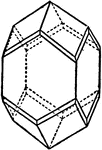
Combination of a bipyramid and prism
"...a combination of a bipyramid of the first order with a ditetragonal bipyramid and the prism of the…
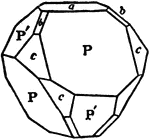
Crystal of Chalcopyrite
"...a combination of two bisphenoids (P and P'), two bipyramids of the second order (b and c), and the…

Crystal of Fergusonite
"...a combination of tetragonal prism of the first order with a tetragonal bipyramid of the third order…

Crystal of Dioptase
"...represents a crystal of dioptase with the fundamental rhombohedron (r) and the hexagonal prism of…

Hexagonal Prism of the First Order
"Hexagonal prism of the first order, consisting of six faces also parallel to the hexad axis, but perpendicular…
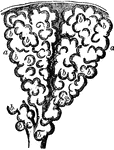
Two Alveoli of the Lung
Two alveoli of the lung, highly magnified. Alveoli are cavities which are honeycombed with bulgings…
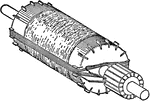
Siemens' Drum Winding
"Illustrating the principle of Siemens' drum winding. In order to make the winding and connections clear,…
White's Pulley
"In order that the successive wheels should revolve in the same time, and their circumfrences should…
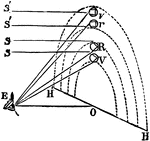
Secondary Rainbow
"The inner or primary bow is much brighter than the other; the outer or secondary bow has the order…
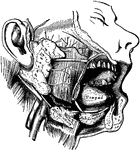
Salivary Glands
The salivary glands. One side of the lower jaw has been removed, and the face dissected, in order to…
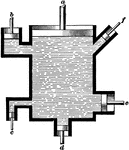
Water Pressure Demonstration
"Let the are of the piston a be 20 square inches; of b, 7 sq. in.; of c, 1 sq. in.; of d, 6 sq. in.;…
Spinal Cord
Diagrammatic view from before of the spinal cord and medulla oblongata, including the roots of the spinal…

A Vertical Section of the Head and Neck
A vertical section of the head and neck through the mesial line, in order to show the opening of the…
Quadrilaterals With Lines Joining Midpoints
Illustrations to show quadrilaterals with lines joining the midpoints of the sides of any quadrilateral,…

Trapezoids With Lines Joining Midpoints
Illustrations to show trapezoids with lines joining the midpoints of the sides of any quadrilateral,…
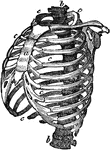
Structure of the Chest
Structure of the chest, showing the framework of the bones which are connected together chiefly by muscles.…

Nearsighted Vision
The lenses and humors of the eye must be very exactly arranged, in order that the sight may be perfect.…
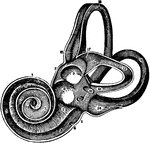
Labyrinth of the Ear on the Left Side
View of labyrinth on the left side, open throughout, in order to show its structure -- enlarged.
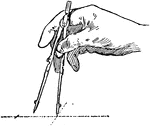
Adjusting the Compass
In changing the compass from a small to large radius, hold the legs together with one hand and spin…


